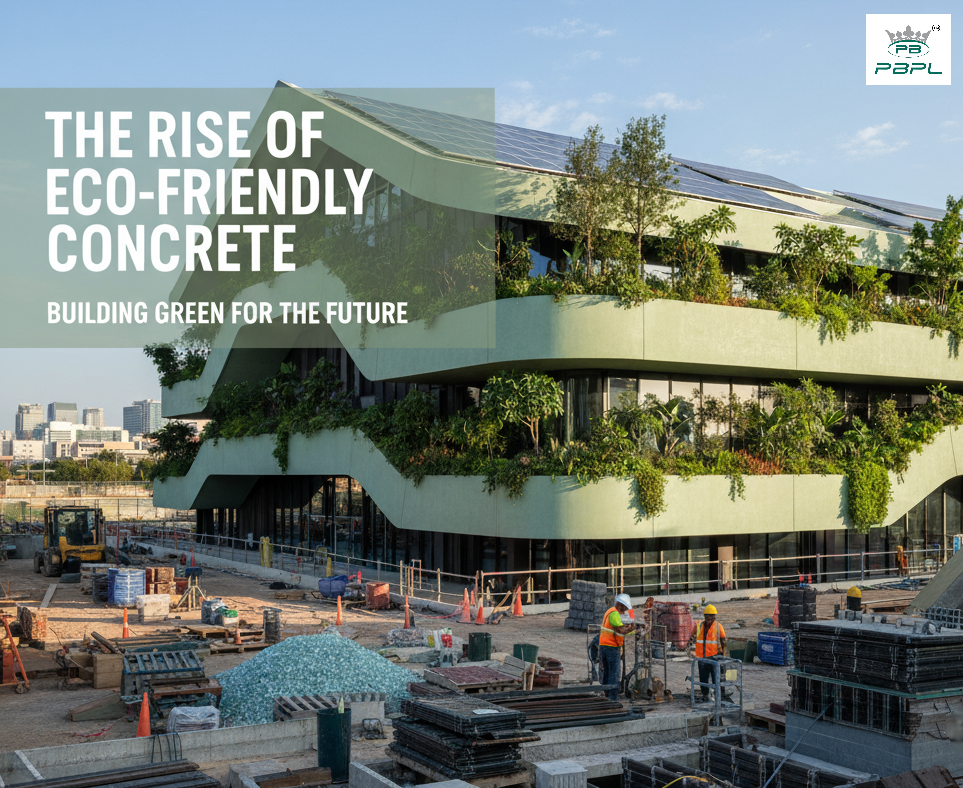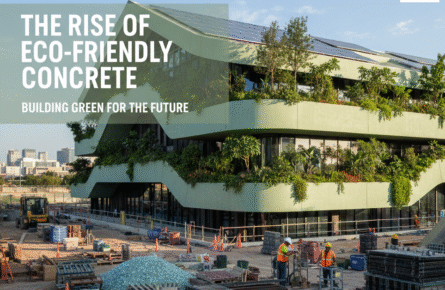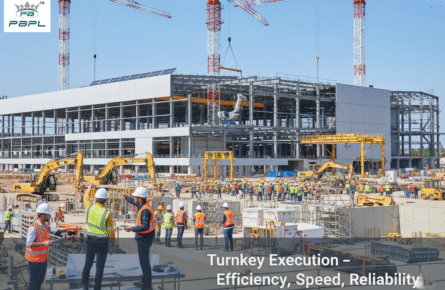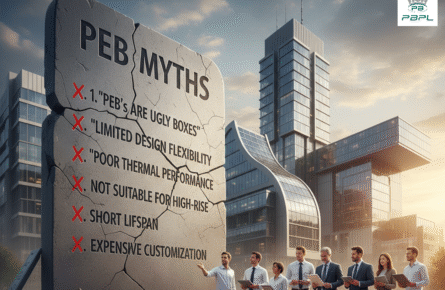
The Rise of Eco-Friendly Concrete: Building Green for the Future
Introduction
Concrete is the backbone of modern construction, but traditional methods have a significant environmental cost. From high carbon emissions to resource-intensive production, conventional concrete contributes heavily to environmental degradation.
Today, eco-friendly concrete is transforming the construction industry. By integrating recycled materials, reducing carbon emissions, and enhancing durability, this sustainable alternative is shaping the future of industrial, commercial, and residential projects.
Learn more about our construction solutions at Panjetani Buildwell.
What is Eco-Friendly Concrete?
Eco-friendly concrete, often referred to as green concrete, uses alternative materials and innovative techniques to reduce environmental impact while maintaining strength and durability. Some key components include:
- Recycled Aggregates: Using crushed concrete or construction waste instead of fresh natural materials.
- Fly Ash and Slag: Byproducts from power plants and steel industries replace a portion of cement, reducing CO₂ emissions.
- Carbon-Capturing Concrete: Innovative formulas absorb carbon dioxide over time, lowering the overall carbon footprint.
- Permeable Concrete: Allows water to pass through, reducing urban flooding and heat accumulation.
- For technical details and industry standards, visit USGBC – LEED Certification.
Benefits of Eco-Friendly Concrete
1. Environmental Benefits
- Reduces greenhouse gas emissions.
- Conserves natural resources and reduces mining impact.
- Minimizes construction waste by using recycled materials.
2. Economic Advantages
- Long-term cost savings due to durability and reduced maintenance.
- Access to green building certifications that can increase property value.
3. Performance Benefits
- Equal or superior strength compared to conventional concrete.
- Enhanced durability, crack resistance, and longevity.
4. Supports Green Certifications
- Projects using eco-friendly concrete can earn LEED, IGBC, and other sustainability certifications.
- Boosts reputation and market value for industrial and commercial clients.
Applications in Construction
Eco-friendly concrete is not limited to small projects—it is being widely adopted in industrial, commercial, and residential construction:
- Industrial Buildings: Foundations, floors, and PEB (Pre-Engineered Buildings) integration.
- Urban Infrastructure: Roads, bridges, sidewalks, and public spaces.
- Commercial & Residential Projects: Sustainable offices, apartments, and complexes targeting green certifications.
Explore our full range of industrial and PEB solutions at Panjetani Buildwell – Our Services.
Challenges to Consider
While eco-friendly concrete offers numerous benefits, some challenges remain:
- Slightly higher initial costs in certain projects.
- Need for specialized knowledge for mix design and application.
- Availability of materials like fly ash or slag may vary regionally.
With proper planning, these challenges can be overcome, making green concrete a viable option for long-term sustainable construction.
The Future of Green Construction
The construction industry is steadily shifting toward sustainability. With increasing regulations, client demand, and innovations in material technology, eco-friendly concrete is poised to become a standard in industrial and commercial construction.
Research is underway on carbon-neutral and carbon-negative concrete, and cities are embracing sustainable urban planning. Early adoption ensures projects are future-proof and environmentally responsible.
Looking to build sustainable industrial or commercial spaces? At Panjetani Buildwell, we provide modern PEB and eco-friendly concrete solutions to deliver strong, durable, and green construction projects.
Contact us today: 9205596515 | 9205951100
Visit: www.panjetanibuildwell.com

















































































































































